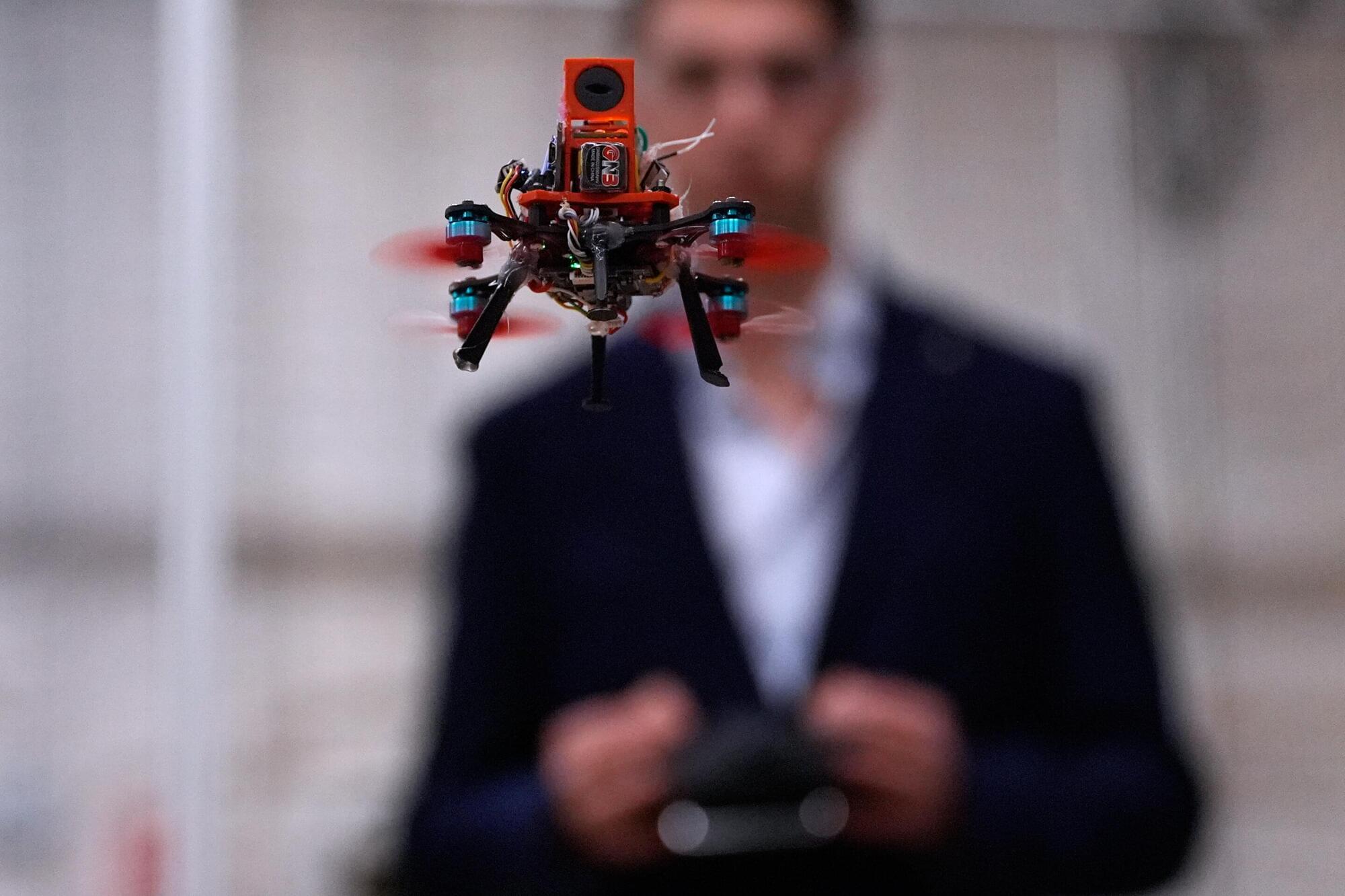The team developed a structural battery by depositing carbon nanotubes on quartz-woven fabrics with efficient charge transport and retention.



Any time you use a device to communicate information—an email, a text message, any data transfer—the information in that transmission crosses the open internet, where it could be intercepted. Such communications are also reliant on internet connectivity, often including wireless signal on either or both ends of a transmission.
But what if two—or 10, or 100, or 1,000—entities could be connected in such a way that they could communicate information without any of those security or connectivity concerns?
That’s the challenge that Alexander DeRieux, a Virginia Tech Ph.D. student and Bradley Fellow in the Bradley Department of Electrical and Computer Engineering, under the advisement of Professor Walid Saad, set out to tackle using quantum entanglement. In short, they used the unique properties of quantum bits, or qubits, as a method of transmitting information.

The wars in Ukraine and Gaza have shown the world that a new technology is now affecting the battlefield: artificial intelligence (AI). The Ukrainian and Russian armies are using AI to help locate and identify targets, pilot drones, and support tactical decision-making.
Developed at Caltech, a new robot is a humanoid that can launch an M4 drone, switching between different modes of motion, with wheels that can become rotors.

Sediment analysis and drone photography of the iconic South American monument of Monte Sierpe (aka “Band of Holes”) support a new interpretation of this mysterious landscape feature as part of an Indigenous system of accounting and exchange.
Stretching 1.5 km across the Pisco Valley of the southern Peruvian Andes, Monte Sierpe (meaning serpent mountain) is a large row of approximately 5,200 precisely aligned holes (1–2 m wide and 0.5–1 m deep), organized into sections or blocks.
It first gained modern attention in 1933, when aerial photographs of the holes were published in National Geographic, but the monument’s purpose is still uncertain.

Don’t be fooled by the fog machine, spooky lights and fake bats: the robotics lab at Worcester Polytechnic Institute lab isn’t hosting a Halloween party.
Instead, it’s a testing ground for tiny drones that can be deployed in search and rescue missions even in dark, smoky or stormy conditions.
“We all know that when there’s an earthquake or a tsunami, the first thing that goes down is power lines. A lot of times, it’s at night, and you’re not going to wait until the next morning to go and rescue survivors,” said Nitin Sanket, assistant professor of robotics engineering. “So we started looking at nature. Is there a creature in the world which can actually do this?”
Disaster has just struck, roads are inaccessible, and people need shelter now. Rather than wait days for a rescue team, a fleet of AI-guided drones takes flight carrying materials and the ability to build shelters, reinforce infrastructure, and construct bridges to reconnect people with safety.
It sounds like science fiction, but new research from Carnegie Mellon University’s College of Engineering combines drones, additive manufacturing, and large language models to rethink the future of aerial construction.
Aerial additive manufacturing (AM)—think flying 3D printers, has been fascinating researchers for years, but the natural instability of a drone in flight makes traditional layer-by-layer fabrication nearly impossible. To overcome this, Amir Barati Farimani, associate professor of mechanical engineering, has equipped drones with magnetic blocks to allow for precise pick-and-place assembly and a large language model (LLM) that can translate high-level design goals like “build a bridge” into executable plans.

Fooled into following a hacker’s rogue commands, a drone is liable to do any number of things. Fly erratically. Speed up. Slow down. Hang suspended in the air. Reverse course. Take a new course. And, most dangerously: Crash.
What the compromised drone cannot do, however, is regain control. Lost to its original assignment—whether it’s delivering a package, inspecting an aging bridge or monitoring the health of crops—the machine is essentially useless.
At FIU, cybersecurity researchers have developed a series of countermeasures to fight back mid-flight against hostile takeovers.

Flying manipulator robots have shown themselves to be useful in many applications, such as industrial maintenance or construction. Their utility in hard to reach or hazardous locations makes them particularly promising in applications that put humans at risk. While these machines have been continuously improving over the years, they are still lacking in certain areas.
One difficulty for drones in the past has been the ability to stack on top of one another and work cooperatively while in flight. This ability is useful for things like swapping tools, similar to the way a nurse might hand different tools to a doctor during a procedure—allowing the doctor (or manipulator drone) to work uninterrupted.
The difficulty comes from something called “downwash,” which is a strong movement of air generated between two drones that interferes with their precise movements and docking procedures. However, a team of researchers from Westlake University in China has designed a new system of micro-aerial vehicles (MAVs) capable of exchanging tools with impressive precision while flying. The design and experimental tests on the “FlyingToolbox” are documented in their new study, published in Nature.